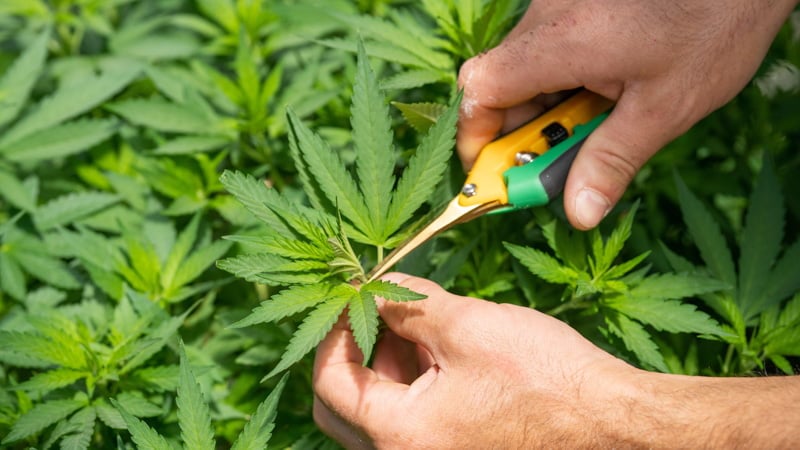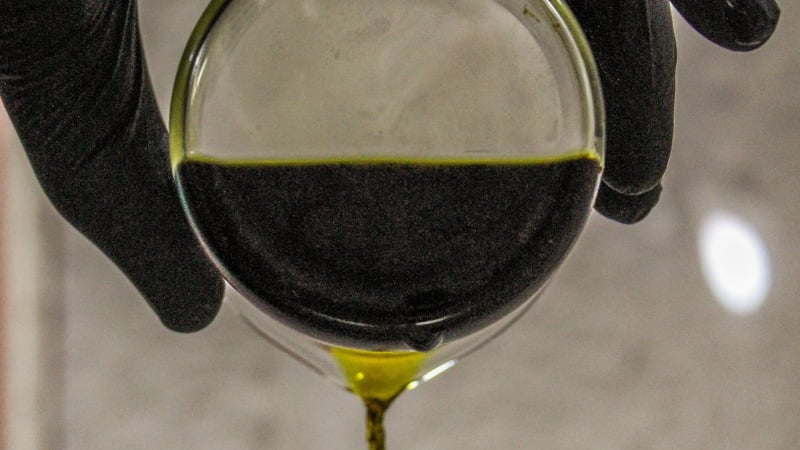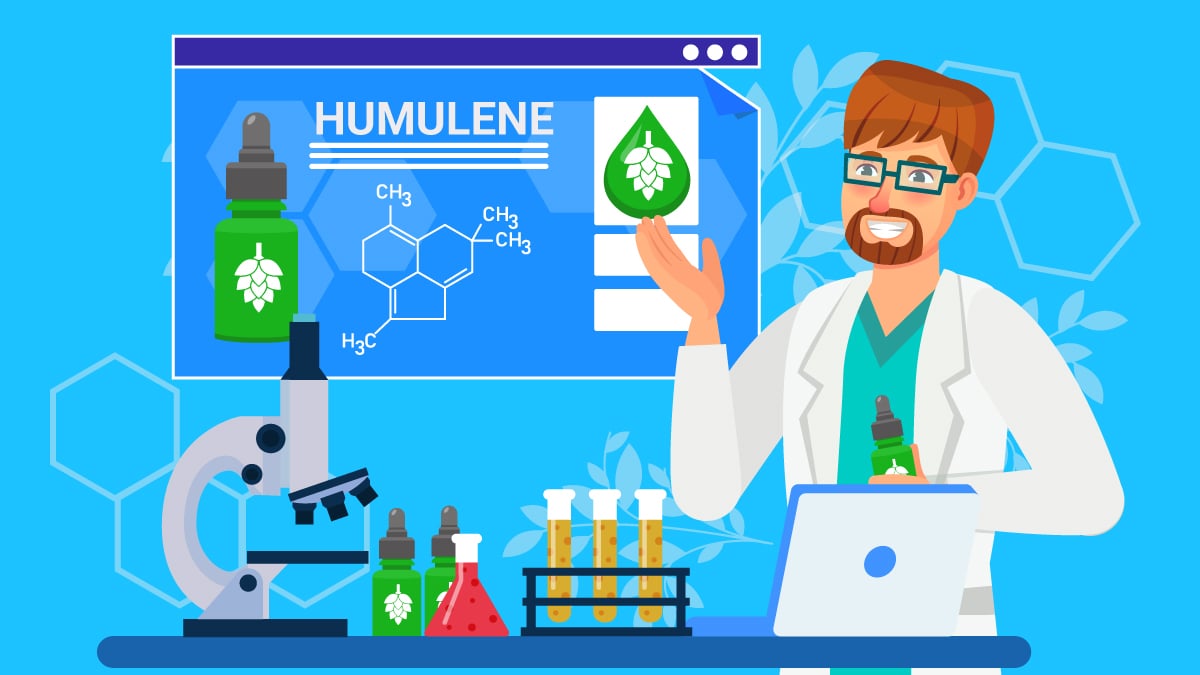How To Increase Terpenes in Cannabis: 8 Tips for Growers

Developing a good terpene profile in your buds is the way to boost flavor and scent.
Believe it or not, it’s not just the genes of the plant that matters. There are lots of tips and tricks you can follow to pump up the terpenes in any strain.
In this guide, we will cover all of the bases when it comes to increasing terpenes, maintaining them, and preserving them throughout your plant’s life cycle.
Tip #1: Use Nutrients & Soil to Boost Terpenes
If you’re looking for large, dense, stinky nugs, you’ll have to know how to use sugars and carbohydrates while growing.
Some sugar carbohydrates function as the main energy line for cannabis plants, feeding the buds and leaves throughout their lives. While other sugars usually function as cellulose for plants, contributing to their overall structure.
Creating a nutrient schedule that promotes sugars is important in developing a plant with a high terpene profile. Sugar carbohydrates are critical during the flowering stage, where energy is required.
A plant will need the most carbohydrates around the fourth week of blooming when its primary goal is bud production.
Cannabis plants that are well-fed and stocked with sugar reserves will most effectively create dense, potent, resinous buds.
Keeping sugar production and reserves at a maximum is key for maximizing resin and terpene production.
Soil is another important factor when it comes to terpene-rich flowers.
Many growers claim that growing in soil or compost develops a more intensely aromatic and flavor experience.
Regardless of if you are growing indoor or outdoor, using soil is the best option as it produces a more terpene-heavy product. While you can boost terps in hydroponic and aquaponic setups, the soil is ideal to use as a growing medium for cannabis because it is native to the plant. Soil also helps maintain ideal pH and alkaline levels, which maximizes absorption of the plant nutrients, increasing terpenes.
Tip #2: Optimize Light Quality & Exposure
When it comes to growing plants, light is a key element. Cannabis is no exception. If you want to grow an enchantingly flavorful strain, you’ll need good sun or light exposure.
If you’re planning on growing your plants outdoors, there will need to be space between the plants so that every cola is allocated the same amount of sunlight as the rest of them.
The same goes for indoor lighting; make sure there is plenty of light coverage for all of your plants.
Simultaneously using an MH and an HPS sodium lamp is ideal during flowering and can significantly enhance the flavor and aroma of the buds. Sometimes it can even alter the intensity of the effects it produces.
It’s also no surprise why cannabis grown outdoors is so brightly flavorful, as the natural sunlight’s complex light spectrum offers plants something we can’t with manmade light sources.
Too much UV light can be a bad thing for cannabis plants, but just enough may be able to boost trichome production. The plant uses trichrome growth as a mechanism to defend itself from harmful UV-B rays.
This trick is a well-known fact among more experienced growers. Artificial light sources such as HPS (high-pressure sodium) and LED lights are commonly used in cannabis cultivation, and they contain virtually no UV light.
That means many indoor growers don’t get the bonus of increased trichomes, cannabinoids, and flavonoids that UV exposure can provide.
Tip #3: Low-Stress Training (or LST)
If you think about it, trichomes and the terpenes found within them are used as a defense mechanism against insects and herbivores. So stressing your plant a bit may be able to produce an effect where the trichomes compensate to protect themselves — resulting in smellier, more pungent buds.
Steady, minor stress introduced to your plant can drastically impact terpene production.
You can begin LST as soon as possible. Once your plant is happy and comfortable in its vegetative stage, it will be prepared and ready for manipulation. Refrain from starting low-stress training too early before the plant has established a few nodes, but you also don’t want to wait around too long to start.
Training your plant by tying down or pruning lower branches during flowering will help direct energy to other flowers, making them produce more trichomes. You can also remove fan leaves around the buds or expose your plant to more frigid nighttime temperatures.
Stress doesn’t mean ignoring your plants’ needs because that is equally important when it comes to the quality and quantity of your yield. Too much stress can dramatically decrease your plants’ wellbeing and will lower your yield.
Some growers will opt to turn the lights off completely two full days before harvest and let no light touch the plants whatsoever. This tricks the plants into thinking they are dying, which will cause them to release all of the resin in their systems, placing it directly onto the buds that have already formed. Once harvest time comes around, these buds are going to be covered in beautiful crystal-like trichomes.
Tip #5: Don’t Forget to Flush
Around two weeks before harvest, you should stop feeding your plants.
The reason you do this is that nutrients have a way of building up in your buds and will depreciate them of the unique, intoxicating flavors and aromas that we all know and love. Without flushing, you won’t get the true flavor and aroma of your flower, even if you dry and cure your buds correctly.
Provide your plants with a pure water source, as it will encourage all the excess nutrients to slowly be washed out and leave you with a clean, fragrant end product.
This is a critical step in maximizing terpenes, as flushing incorrectly may lead to a final product with poor smell and taste and an unenjoyable harsh smoking experience.
Tip #6: Adjust Temperature & Humidity Levels
Environmental factors can be controlled to optimize your terpene production. Temperature is one of the most important factors. Lowering the temperature of your plant’s environment at night will put the trichomes into overdrive.
Reducing the temp by 5 degrees, give or take, is ideal, as you do not want to make your plants too uncomfortable and screw up the quality and yield.
The optimal operating temperature for growing cannabis is 75-80°F (or 23-26°C).
Temperatures below 60°F can be counterproductive and decrease quality and yield. Keep in mind a large temperature drop between light and dark periods could also potentially cause condensation or issues related to humidity.
Humidity levels should be between 50-60% in a cannabis flowering room. Lowering the humidity within the last couple of weeks of flowering can reduce the likelihood of mold growth or other humidity problems. It also increases terpene production.
Tip #7: Harvest With Care
Terpenes are sensitive compounds; it doesn’t take much for them to degrade. If you harvest too late, you will be missing out on that sharp punch of flavor and aroma.
You can use a magnifying glass to observe the color and shape of your trichomes as a general indicator of whether or not it is time to harvest.
This also means you will have to handle your buds with care during harvest.
Trichomes are also sensitive in the sense that they are fragile; each time you handle your buds, you are destroying some of these trichomes, which contain your precious terpenes.
Prevent the degradation of trichomes by handling your buds gently and limiting how often they are moved or touched. Trimmers should handle with care and hold onto a stem if it’s possible.
Tip #8: Dry & Cure Your Bud Properly
Drying and curing your buds is a pivotal point in either preserving or destroying your terpenes. It’s crucial to keep the temperatures low, lights off, and keep the humidity around 45-55% at all times. Proper curing will alter the chemical makeup of your buds, leaving them much tastier and more enjoyable to smoke.
The hard work doesn’t end after your harvest; you have to put just as much care and attention into curing and drying the buds correctly to ensure your product is stinky and tasty. You will want to take 2-3 weeks to dry your buds in a cooler environment. Excess heat will degrade your ultra-sensitive terpenes.
Once you are done drying, you will have to cure them. In this step, you will have to maintain lower temperatures, keeping them in the dark, and a humidity level slightly higher, around 55%. This step will greatly impact the taste and smell of your flower.
Common Cannabis Terpenes
There are many different terpenes, and the familiar aromas in different strains of cannabis are directly related to the effects felt by users. You can read our previous post to learn more about what terpenes are here.
Some of the most common terpenes found in buds are myrcene, limonene, linalool, caryophyllene, alpha-pinene, beta-pinene, and alpha-bisabolol.
1. Myrcene
Myrcene is the most prominent terpene in cannabis. Myrcene often smells funky with strong notes of earth and musk, somewhat resembling cloves. It also has a grape-like fruity undertone. It is also found in hops, lemongrass, thyme, and mangoes.
Myrcene has been reported to be useful in reducing overall inflammation and chronic pain and possesses some sedative effects.
2. Limonene
Limonene is another prominent terpene found in many cannabis strains. As the name implies, limonene produces a pungent lemon aroma.
Limonene has been thought to reduce stress and enhance one’s mood. There’s also the possibility of it having antifungal and antibacterial properties. This leads us to believe that growing strains high in the terpene limonene may be good for controlling any mold growth on the plant.
3. Linalool
Linalool is the terpene responsible for the enticing typical marijuana smell, featuring spicy, floral notes. This terpene can also be found in lavender, mint, coriander, and cinnamon.
It possesses sedating properties that can promote calmness and help a user relax.
4. Caryophyllene
Caryophyllene is the terpene found in cannabis that is responsible for peppery, warm, spicy scents. This terpene is also found in black pepper, cloves, rosemary, and basil.
Caryophyllene is the only terpene that can bind directly to cannabinoid receptors. There is some evidence that it may possess analgesic and anti-anxiety properties.
5. Alpha-Pinene & Beta-pinene
Alpha and beta-pinene are two terpenes commonly found in cannabis that produce a smell similar to pine trees. It can also be found in parsley, orange peels, and rosemary.
Some suggest that pinene terpenes possess anti-inflammatory effects.
6. Alpha-Bisabolol
Bisabolol possesses a pleasant floral aroma. This terpene can also be found in chamomile flowers. It’s also used in the cosmetic industry.
Alpha-bisabolol seems to effectively manage bacterial infections as it appears to have antioxidant, anti-irritation, and analgesic properties.
It’s important to note that once plants reach the end of their flowering stage, terpene levels will be at an all-time high. Higher terpene levels mean stronger, more pungent buds and will leave customers wanting more. Various factors will affect your terpene levels, such as the plant’s nutrients, environmental conditions, and how they are harvested.
If you’re looking to boost your terpenes and create a strain that is intoxicatingly aromatic and tasty, follow our tips!
Final Thoughts: Boosting Terpene Content in Your Cannabis
To quickly recap the information above, your nutrients and soil play a big role in how rich a terpene profile your buds have. Not only that but the exposure and quality of light is another big factor. You’ll also want to stress your flower out just a bit with some low-stress training techniques.
Flushing, carefully managing temperature and humidity and putting care into the harvest, drying, and curing process will all dictate whether or not you can increase, maintain, and optimize your terpene production.
Buds with a higher level of terpenes equal better buds. So if trichomes and terps are what you seek out, you’ll definitely want to try out everything we’ve mentioned above during your next grow.




